.png.transform/rendition-xs/image_image%20(1).png)
Basking in Basque Wines
Say the word chacolí and some people's thoughts turn to the rolling hills, green valleys and stunning coasts of the Basque Country, the source of this typically light and crisp white wine. But there is much more to chacolí than a refreshingly pleasant experience. Centuries of history, native grape varieties, three denominations of origin, emerging styles, and increasing production and exports—these are just some of the factors that have contributed to the comeback of these vivacious Spanish wines over the past thirty years
You may have heard it called by different names, chacolí in Castellano and txakoli in Basque, although the first written mention of this wine in the 16th century referred to it as chacolín. For the next three centuries, chacolí was such an important product throughout the Basque Country (and parts of neighboring Cantabria, where it is no longer produced) that laws of protection were created to prevent the encroachment of foreign grapes and wines in this area. Then, industrialization struck, along with the development of other industries like fishing and agriculture, which led to the planting of more conventional crops. These factors, combined with the arrival of plagues like mildew and phylloxera (which decimated most European vines in the late 19th century), laid waste to the chacolí vineyards and resulted in this style of wine nearly disappearing for the next hundred years or so.
In the 1980s, viticulturists and winemakers formed associations in the three main areas of the Basque Country with longstanding traditions of producing chacolí: Getaria, Bizkaia and Álava. Dedicated to the promotion and recovery of chacolí wines, these organizations were precursors of the three eventual wine denominations: DO Chacolí de Guetaria-Getariako Txakolina-Txakoli de Getaria, Chacolí de Bizkaia-Bizkaiko Txakolina-Txakoli de Bizkaia and Chacolí de Álava-Arabako Txakolina-Txakoli de Álava, created in 1989, 1994 and 2001, respectively.
What exactly is chacolí?
Traditionally, it refers to young, white wines made principally from the local white grape Hondarrabi Zuri (Ondarribi Zuri in Basque), as well as the red grape Hondarrabi Beltza (Hondarribi Beltza in Basque). Light, dry and crisply acidic, these wines usually have a relatively low alcohol content (9-11%) as well as a touch of effervescence. Though this style continues to predominate, it has by no means stayed stagnant. In fact, chacolí is enjoying a renaissance, with these traditional wines taking on new levels of quality and variety. Different styles are emerging to share in the limelight, including barrel fermented chacolís with a serious capacity for aging, rosado wines and a small quantity of reds. Some producers are making other types as well, like late harvest and sparkling wines. According to DO regulations, these can be made in the same wineries using the same grape varieties, but are not considered chacolí.
Despite largely shared histories and grape varieties, as well as similar characteristics and trajectories, the areas that comprise the three denominations of origins for chacolí wine have plenty of distinguishing features, as well as their own traits, styles, wineries and stories to tell.
Getaria by the sea
Chacolí can credit some of its resurgence in the 1980s to a push from local gastronomy "societies" and the wildly popular group of Basque chefs who were taking the culinary scene by storm. In and around gastronomic mecca San Sebastián, for example, chefs like José Mari Arzak and Pedro Subijana had forged a culinary movement of nouveau cuisine, while promoting local products, including chacolí wines. These influences were particularly felt in DO Chacolí de Guetaria, which is the largest and probably best-known of the three chacolí denominations, with annual production of 2.9 million bottles ¬– 90% of which are white wine. Although this DO originally applied only to the areas of Getaria, Zarautz and Aia, it later expanded to include the entire province of Guipúzcoa, of which San Sebastián is part. Today the DO boasts 402 hectares of vines, many of which are planted along the lush and hilly coastal headlands near Getaria and Zarautz, where they enjoy salty air from the Bay of Biscay and an advantageously mild climate. Here, all of the owners of the region's 31 wineries are first and foremost viticulturists. They tend the vines, make the wine and finally sell it – seeing the process through from start to finish. This is unsurprising in a region where it was usual for families to cultivate vines and make their own small batches of chacolí. There is a very home-grown, artisanal feel about these wines, but this in no way precludes the use of modern techniques, cutting-edge installations and the international vision of wineries like Txomin Etxaniz, undoubtedly one of the most well-known brands of chacolí both in Getaria and elsewhere.
With a wine-making history that dates back to 1649, this family company is perched on the hills overlooking the town of Getaria and the sea. According to owner Ernesto Txueka, the winery has 40 hectares of its own grapes and sources from another 25 hectares. The company produces around 500,000 bottles a year of traditional white chacolí (made with approximately 90% Hondarrabi Zuri and 10% Hondarrabi Beltza), a highly aromatic and pleasantly fruity wine with the refreshing acidity and light fizz that is characteristic of this area's wines. In accordance with tradition, the chacolí is left to lie on its lees, with a natural covering of CO2 preventing oxidation and dissolving any sediments. Txueka adds that it is racked only two days before bottling. Txomin Etxaniz also makes white and rosé versions of its sparkling wine, as well as a late-harvest version. Additionally, it produces around 40,000 bottles annually of its chacolí rosado. Txueka points out that this rosé wine was created specifically to meet international market demands, and nearly all of it is exported. The company began sending its chacolís to the United States twenty years ago, and currently exports around 18% of production to the USA, France, the UK, Japan, Mexico, Holland, Belgium, Australia, the Philippines and Scandinavia.
Diverse Bizkaia
With 350 hectares, 44 wineries (15 of which account for 85-90% of total output) and an annual production of 2,500,000 bottles, the Chacolí de Bizkaia-Bizkaiko Txakolina-Txakoli de Bizkaia is the second largest chacolí denomination. There are four authorized types of chacolí here: white, rosado, barrel-fermented white, and red, made primarily with the classic Hondarrabi Zuri and Hondarrabi Beltza grapes, as well as white variety Ondarrabi Zuri Zerratia. According to José Antonio Txapartegi, the Secretary of the DO's Regulatory Board, chacolí wines from Bizkaia stand out for their nearly imperceptible fizz, slightly higher alcohol content (around 12%), and very complex flavors and aromas characterized by fruity, floral and herbaceous notes, plus a marked acidity. Txapartegi also points out that one of the growing trends here is the production of barrel-fermented white chacolís – dry, structured wines that are demonstrating "a capacity for evolution in the bottle and consumption that goes beyond the year after the harvest".
One company that embodies the new and emerging styles of Bizkaia chacolí is Bodegas Itsasmendi. With 35 hectares of vines located on 15 vineyards in 8 different municipalities, Itsasmendi takes advantage of Bizkaia's diverse geographies and microclimates (Itsasmendi literally means "sea and land" in Basque), which, according to its Technical Director Garikoitz Rios, yield a richly varied selection of grapes. Rios notes that "Bizkaia has an Atlantic climate that is an important differentiating factor for our products, with acidity as their common thread. Our wines' ability to be stored and aged is the result of this acidity". The winery offers five very different products: a young and refreshing chacolí, an aged white fermented on its lees called Itsasmendi 7, which Rios says evolves and ages "in a very curious way in the bottle", an elegant, limited edition wine called Itsasmendi Artizar that "attempts to capture the subtleties that go on in the vineyard", and a late harvest (Itsasmendi Urezti) wine, which falls into the DO's category of "special wines" – a category that accounts for a total of around 6,000 liters annually.
This varied selection has served Itsasmendi to great advantage in terms of export, as Rios points out that different wines are more popular in different areas. "Itsasmendi 7 works well in Japan and France... the young (white) chacolí in the USA and Germany, and the delicate Urezti in countries like England and Holland." The winery currently exports between 15-20% of a total production of 225,000 bottles, a market that Rios attributes to the worldwide gastronomic prestige of the Basque Country.
Growing tradition in Álava
DO Chacolí de Álava-Arabako Txakolina-Txakoli de Álava is in the southern reaches of inland Basque Country, an area known for its Rioja wines. It is produced here in five municipalities in the hamlet of Ayala. The wines are typically light and fruity, with faintly floral and herbaceous nuances. By the time the "Association of Artisanal Producers of Chacolí of Álava" was founded in 1988, the 550 hectares of chacolí vines recorded for the area in 1877 had shrunk to only 5. DO Álava now has 96 hectares of vineyards, eight wineries and an estimated production of 580,000 bottles per year in 2016, which should increase to 900,000 bottles in years to come.
With so few wineries, it's not surprising that more than half of total production can be attributed to only one. Artomaña Txakolina is a family company whose origins were strongly linked to the creation of the producers association in 1988. The winery currently produces 300,000 bottles a year of 100% traditional white chacolí, a product that it makes with the help of technological innovations – the result of an ongoing commitment to R&D. Maialen Guerrero of the winery's quality and export department says that despite the market trend of offering products different from traditional chacolí, the company prefers for the time being to concentrate on improving the quality of its products on a day by day basis.
Guerrero goes on to say that one challenge has to do with the export market, which is the final destination for a third of the winery's products. "When you're talking about export, the delivery time to customers increases considerably. Therefore, we incorporated a cryomaceration process to prolong the aromatic structure of our chacolí." As with the other chacolí wineries, the principal international market is the United States, where restaurants and gourmet shops are key customers. Guerrero clarifies that, "We are `forcing´ the export market to grow through hard work and dedication. Chacolí is linked to our land and culture, and only by connecting consumers to this cultural factor, can they enjoy our wines to the fullest."
You may have heard it called by different names, chacolí in Castellano and txakoli in Basque, although the first written mention of this wine in the 16th century referred to it as chacolín
Adrienne Smith/©ICEX
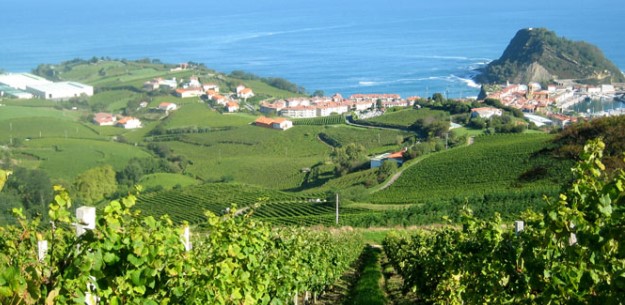
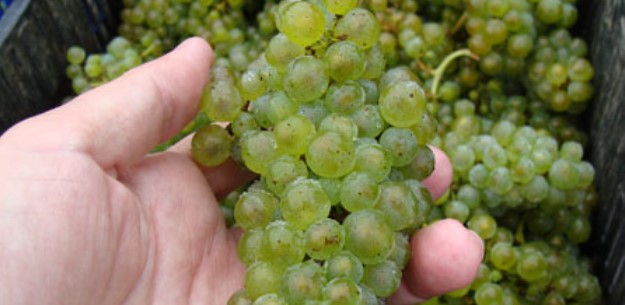
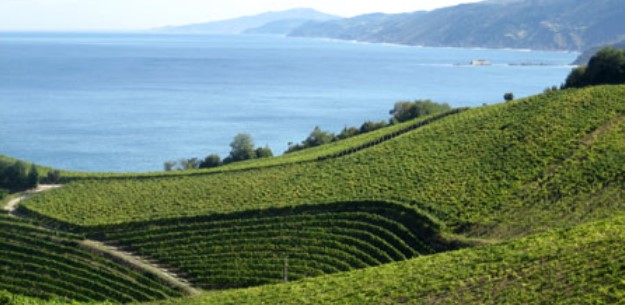
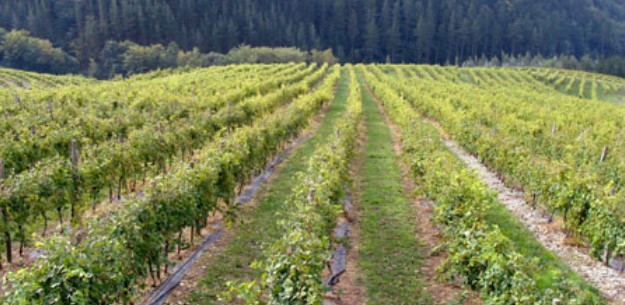
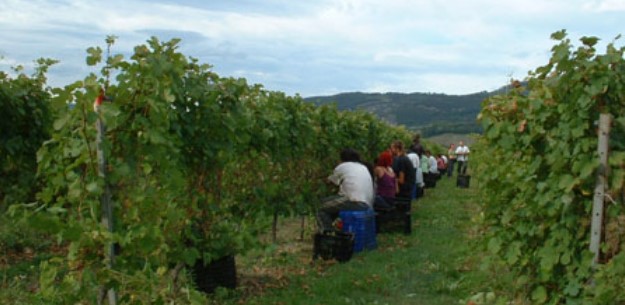
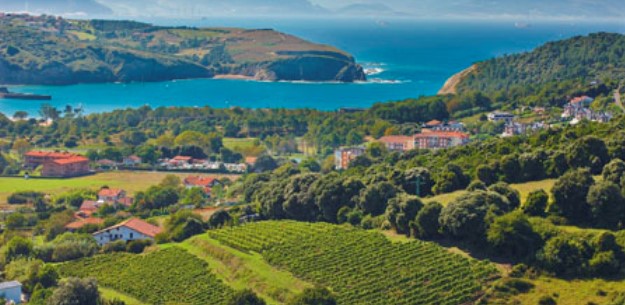
- Basking in Basque Wines
- Basking in Basque Wines
- Basking in Basque Wines
- Basking in Basque Wines
- Basking in Basque Wines
- Basking in Basque Wines


